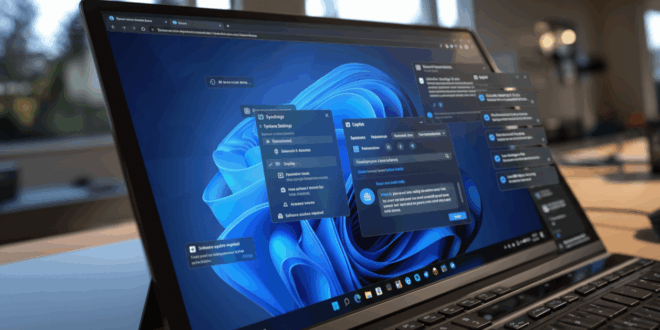On its 40th anniversary, Windows is facing harsh criticism for excessive bloatware and poorly executed AI features. Many users are seriously considering switching to Linux or SteamOS.
November 20, 2025, marks Windows’ 40th anniversary—a period of absolute dominance in the personal computer market. To commemorate the occasion, Microsoft aimed to make a grand announcement: Windows would become an “agentic OS.” Unexpectedly, this news sparked widespread outrage. Users, developers, and enthusiasts accused the operating system of becoming bloated, intrusive, and often unnecessary.
Windows Turns 40: An OS Mid-life Crisis
Like a 40-year-old discovering wrinkles and trying to hide them with flashy gimmicks, Windows is now cluttered with numerous showy but poorly managed AI features.
Copilot, the assistant intended to simplify tasks, fails at times with the most basic functions, misadvising display options, ignoring active settings, and suggesting absurd solutions. Videos of these blunders circulate widely on social media, fueling user discontent.
Additionally, bloatware is making a strong comeback. Installing a fresh copy of Windows 11 feels like an ordeal.
The prerequisites include a mandatory Microsoft account, ads for Microsoft 365, enforced activation of OneDrive, and constant reminders for Recall—a function for continuous screen capture that was initially removed and then reintroduced despite privacy concerns.
Each update brings new AI applications in Paint, Snipping Tool, or Notepad—features rarely requested and often impossible to uninstall cleanly.
Even Loyal Users Are Starting to Doubt
The discontent now spans all demographics. Gamers have noted that SteamOS, on the same hardware, provides better performance and battery life.
Developers are frustrated with a system that constantly evolves, prioritizing flashy AI over stability. Companies are hesitant to transition to Windows 11 due to hardware requirements imposed by NPU chips and recurring bugs.
The most significant indicator was the end of support for Windows 10. Fully functioning machines are being forced towards Windows 11, seen as bulkier, slower, and less user-friendly. Many are opting to pay for extended support, while others install Linux with just a few clicks, often for the first time.
Microsoft claims to be listening. Pavan Davuluri, the head of Windows, publicly acknowledges the shortcomings and assures that the team is working on reliability and flexibility. However, the responses remain vague, and comments are sometimes disabled on official posts.
Despite still commanding over 70% of the desktop market share 40 years after its inception, one has to wonder if Windows is digging its own grave by trying to do too much.




